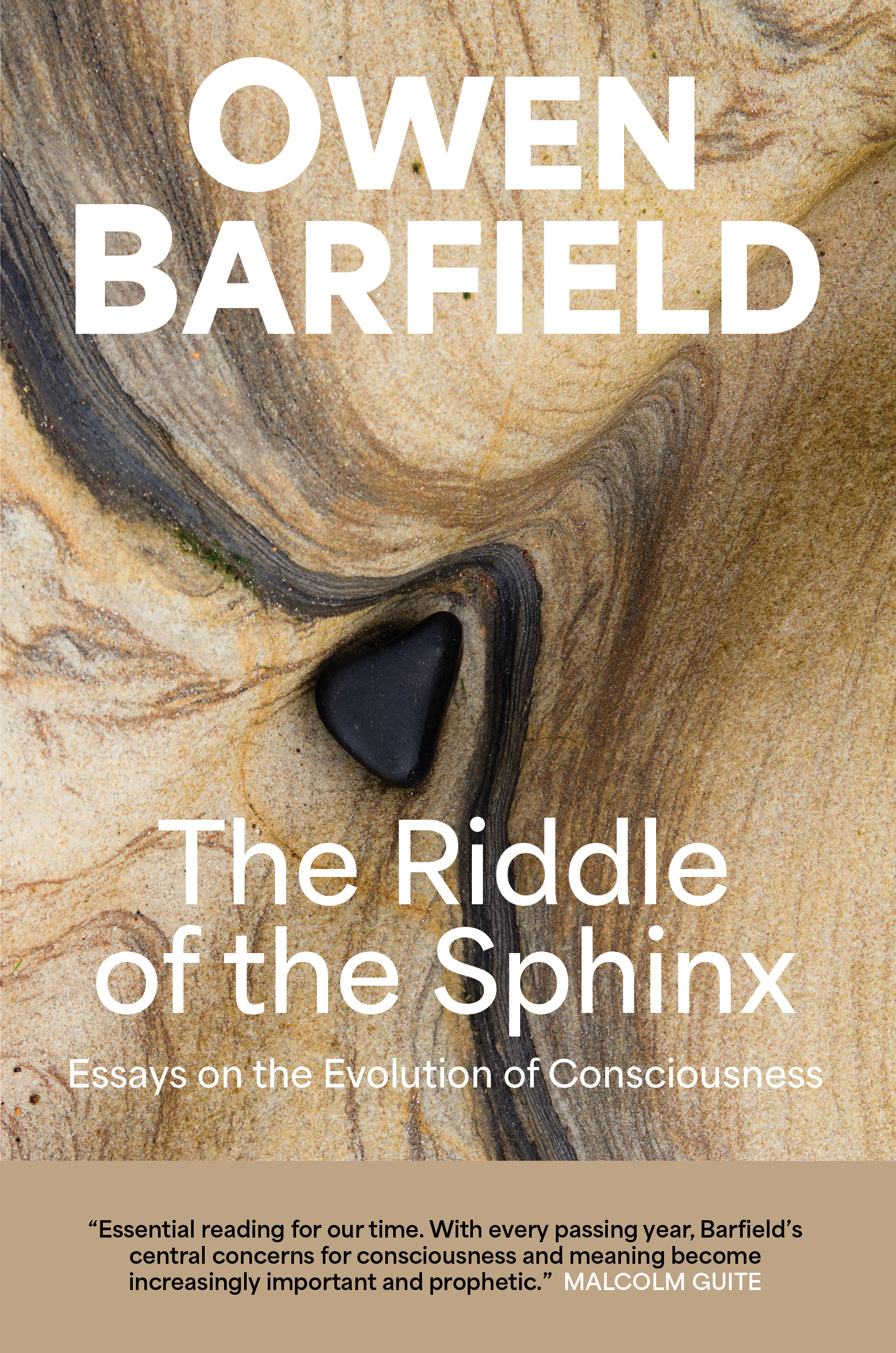A new collection of essays by Owen Barfield, The Riddle of the Sphinx, was published by the Barfield Press in November 2023. The book’s name comes from one of the essay titles.
But “the riddle” in this case does not refer to the famous one that Oedipus solved — “What has four legs at dawn, two at noon, and three in the evening?” The answer to that one was, “man”. Or today we might say, “the human being”. Oedipus realized that he crawls as a toddler, stands upright as an adult, and may be supported by a stick in old age. That riddle can be thought of as pointing towards the Sphinx’s concerns.
Rather, the riddle referred to in the essay’s, and the book’s, title is the one of the very being of the Sphinx itself. Barfield’s admired teacher, the Austrian spiritual scientist Rudolf Steiner (1861 – 1925), once explained this other, deeper riddle as follows:
If you recall the all-embracing significance of the figure of the Sphinx, which was intended to represent the great riddle of human evolution, then you have in fact what a clairvoyant culture, which was inwardly aware of the truth about humanity, put before this humanity. The features which stand out separately in the Sphinx [i.e. the lion, the bull and the eagle together with the underlying human] are in human nature inwardly interwoven. […] If one weaves these elements together, then the human form as we have it today comes into being before us. The clairvoyant consciousness cannot then look upon a sphinx — which to begin with does not resemble a man at all — without saying to himself: ‘Thou art I myself!’
Barfield, lamenting those artists and scientists who disregard all that is distinctive and best in the human as a question and a reality, does not go into all that background. He simply touches on the riddle in the lightest of ways:
What was, or rather what is, the meaning of anthropos [Greek: the human being]? Asked originally by the Sphinx, this question was answered in the Mysteries not in the indicative but in the imperative mood: gnōthi seauton — know thyself!
For me, the editor of this collection, Barfield’s question is emblematic of his spiritual and intellectual quest. It seemed, in present circumstances, as worthy as ever to appear on the cover. “Know thyself” remains a good and neglected answer also, since we each need to answer this question one person at a time.

In fact the essay, “The Riddle of the Sphinx”, with its question about the meaning of the human being, is something of a hinge point for the book as a whole.
The essays in the book before the title essay showcase the ways in which Barfield demonstrated, through scrupulous scholarship that anyone could replicate, that human consciousness has evolved in during the period of recorded history.
Barfield’s path towards understanding this evolution began with an immediate, and common, personal experience: it was what he called the ‘‘felt change of consciousness’’ that came while reading lyric poetry. The poet’s use of metaphor brings the reader to see the world differently. His path continued with a careful philological investigation of changes in the meanings of particular (Greek, Latin, earlier English) roots of the words we use today, together with a closely reasoned account of how those changes had come to be.
Concomitant with this evolution has been the loss of the experience of connection with the natural world, an apparent withdrawal of meaning. This has been the condition of a new human freedom: freedom from nature, from custom, from the spiritual world itself. It should not need pressing at the moment that this freedom is accompanied by an awesome depth of responsibility.
After the title essay, the book contains essays, among other topics, about: literary Romanticism’s attempts to perceive meanings in the world denied by materialistic ways of thinking, Goethe’s holistic perception of phenomena, and fresh readings of the Bible and of literature. There is also a good deal of the contents of Rudolf Steiner’s findings, which are likely to be new even to committed Barfield readers.
In this way, The Riddle of the Sphinx, which we at the Owen Barfield Literary Estate are so pleased to publish approximately a quarter of a century after Barfield’s death, represents the full sweep of his achievement.


